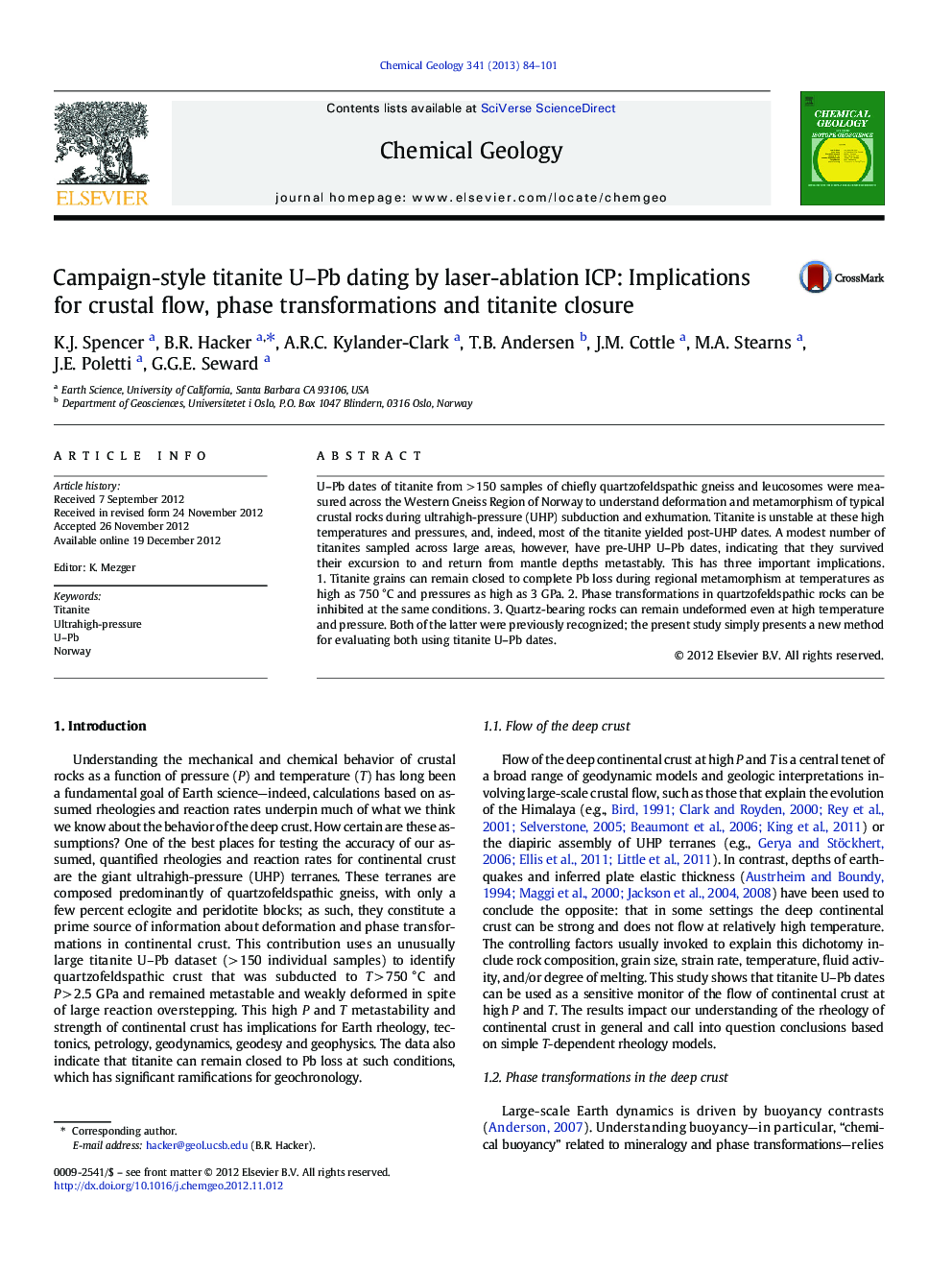| Article ID | Journal | Published Year | Pages | File Type |
|---|---|---|---|---|
| 4699043 | Chemical Geology | 2013 | 18 Pages |
U–Pb dates of titanite from > 150 samples of chiefly quartzofeldspathic gneiss and leucosomes were measured across the Western Gneiss Region of Norway to understand deformation and metamorphism of typical crustal rocks during ultrahigh-pressure (UHP) subduction and exhumation. Titanite is unstable at these high temperatures and pressures, and, indeed, most of the titanite yielded post-UHP dates. A modest number of titanites sampled across large areas, however, have pre-UHP U–Pb dates, indicating that they survived their excursion to and return from mantle depths metastably. This has three important implications. 1. Titanite grains can remain closed to complete Pb loss during regional metamorphism at temperatures as high as 750 °C and pressures as high as 3 GPa. 2. Phase transformations in quartzofeldspathic rocks can be inhibited at the same conditions. 3. Quartz-bearing rocks can remain undeformed even at high temperature and pressure. Both of the latter were previously recognized; the present study simply presents a new method for evaluating both using titanite U–Pb dates.
► > 150 U–Pb titanite dates were measured across the Western Gneiss Region, Norway. ► Titanite grains can remain closed to Pb loss at 750 °C and 3 GPa. ► Phase transformations in quartzofeldspathic rocks can be inhibited at these conditions. ► Quartz-bearing rocks can remain undeformed even at high temperature and pressure. ► Zircon is not recommended as a standard when measuring titanite U–Pb spot ages.
